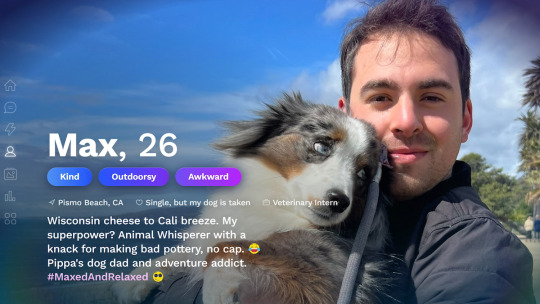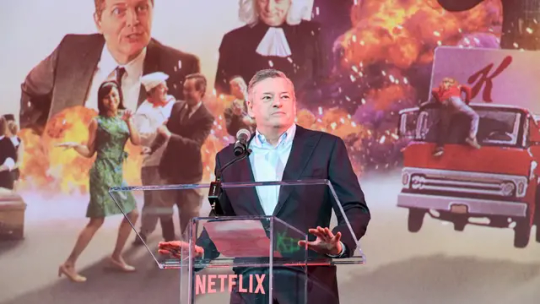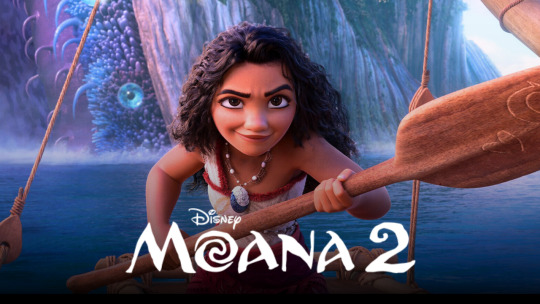Don't wanna be here? Send us removal request.
Text
The Algorithm Goes on Stage: How AI Changes the Video Streaming Sector
Over the past year, AI has become a leading force in the video streaming industry. It is no longer just the invisible algorithm behind the “Recommended for You” list but an active, visible presence that changes how stories are told. Whether you’re binge-watching a new series, catching a live game, or browsing through titles, chances are AI played a role in shaping that moment.
Netflix has led the change, transforming AI into a source of creative innovation and inspiration. In 2024, The Season 6 of Netflix’s show The Circle featured Max, the series’s first AI contestant — a chatbot competing with human players. Trained on data from previous seasons, Max was designed as a 26-year-old veterinary intern from the Midwest. This changed the game and marked a significant moment in reality television, as many contestants did not suspect Max’s non-human nature initially but gradually realized his lack of emotional depth. In addition to content production, Netflix is also testing an OpenAI-powered natural language search engine in 2025. Users can “look for shows using far more specific terms,” even based on their moods.

Meanwhile, Disney+ is integrating AI into its monetization infrastructure. In early 2024, Disney+ launched “Magic Words,” an AI infrastructure that scans content libraries and tags scenes, enabling advertisers to place contextually relevant ads within content. Disney+ has decided to extend “Magic Words” to live programming in 2025, such as sports or award shows, where audiences would watch seamless ads that do not disrupt their viewing experiences.

Amazon Prime Video has also embraced AI in multiple ways, with a focus on localization and user experience. The “X-Ray Recaps” feature uses generative AI to produce summaries of episodes and seasons, helping users catch up or re-enter a series without spoilers. AI-powered dubbing for selected titles also allows Prime Video to expand in international markets more efficiently, with English and Latin American Spanish versions already live. In live sports, Amazon Prime Video uses AI to layer real-time predictive analytics into NFL broadcasts, making the viewer experience more immersive.

What is interesting is how each platform is letting AI reflect its personality. Netflix turns it into a creative experiment. Disney+ uses it to make ads smarter without ruining the story. Amazon leans into convenience, making everything easier to watch and understand. AI isn’t just behind the scenes anymore—it’s shaping how we watch, what we watch, and even how we feel while watching it.
(400 words)
0 notes
Text
Paramount+ Goes Local in Japan: Partnership with Lemino
Paramount+ is expanding in Japan through a deal with Lemino, a prominent local video streaming company operated by Japan’s top telco NTT Docomo. Japanese viewers will have access to Paramount+ content via Lemino Channel, which will be available as an “à la carte subscription” on the platform for a monthly fee of approximately $5.40.

This move is part of Paramount’s broader strategy to deepen its presence in Japan and expand in Asia-Pacific markets. Marco Nobili, EVP and international general manager at Paramount+, stated that Paramount+ hopes to deliver some of the “very best films, franchises, and series to even more Japanese fans” while it “continues to have a strong footprint in international markets around the world.”
Prior to this, Paramount+ has already established partnerships with J:COM and WOWOW INC., two major players in Japan’s cable TV industry. These two partnerships allowed Paramount+ to secure unique exposure to traditional media consumers, while offering its service through Amazon Prime Video Channels further positioned the brand within a familiar platform for Japanese users.

However, the road ahead for Paramount+ is certainly not easy. Media adoption and consumption in Japan are unlike those of any country globally, as the time spent with digital devices is surprisingly low. According to eMarketer’s Global Media Intelligence Report of East Asia and Oceania 2024, Japan consistently ranks last in the region when it comes to time spent with almost all forms of digital media — including video streaming. Among Internet users, while traditional broadcast TV still commands 1:48 daily, Japanese users will only spend 23 minutes a day with online streaming services in 2024. While desktop and mobile usage rise slightly to 2:13 and 2:01 per day, these figures are still 37 minutes and 1:47 below the global average, respectively.

Why would Paramount+ choose to navigate such a unique yet difficult streaming market in Japan then? Despite its different ways of consuming media, Japan remains a promising and high-value market with global cultural influence, large entertainment businesses, and surprisingly very loyal audiences of popular franchises. By partnering with Lemino, J:COM, and WOWOW, Paramount+ offers its services to consumers of both traditional media and video streaming. Meeting users where they already are, Paramount+ slowly earns its relevance in a digital landscape that remains uniquely traditional.
(381 words)
0 notes
Text
Streaming Meets Gaming: Netflix Turns Black Mirror’s Newest Episode Into a Dystopian Reality You Can Play
In April 2025, Netflix launched Thronglets, a mobile game inspired by Black Mirror Season 7’s episode “Plaything”. Tied to one of Netflix’s most popular sci-fi dystopian shows Black Mirror, Thronglets is a calculated move by Netflix to attract viewer attention and expand beyond video streaming.

In the episode “Plaything,” a 1990s game journalist becomes obsessed with a creepy pixel simulation game in which the creatures develop their own consciousness, Thronglets. The game soon spirals into a dark reality: the Thronglets evolve, question their existence, and take control of the human minds — classic Black Mirror dystopia.

The game Thronglets launched Thursday, April 10 at 12 A.M., timed to the release of “Black Mirror” Season 7. Developed by Netflix’s in-house game developer, Night School Studio, Thronglets is available in Netflix’s streaming app for subscribers and free to download in mobile app stores. Almost identical to the game in the episode, players would feed, bathe, and play with the fuzzy little creatures, watching them grow exponentially as a population. However, it eventually starts feeding back into the dark and surreal side of the show, as players start receiving guilt-inducing notifications and getting asked existential questions like “What does it mean to die”.

This is not the first time that Netflix tries to expand beyond video streaming into the gaming industry. Long before Thronglets, Netflix began building its gaming portfolio by launching a collection of games tied to popular franchises like Squid Game, Stranger Things and Too Hot to Handle.
With the core mission to entertain the world, Netflix sees gaming as a “natural next step to support and deliver on the vision” to entertain its 300 million global subscribers. Games are a way for Netflix to promote new shows while engaging and retaining subscribers between seasons. According to Netflix games chief Alain Tascan, the strategy for Netflix’s gaming is to “be on par with TV and film in driving revenue and reducing churn.” It also opens up cross-platform monetization opportunities in the long term, from potential purchases in the Netflix streaming app to game-based merch.

Thronglets fits neatly into Netflix’s evolving vision for its platform. No longer just a content library of shows and films, Netflix is becoming a multi-layered interactive entertainment hub—part streamer and part gaming. If the fans keep feeding their Thronglets, Netflix might just keep feeding its cash flow.
(388 words)
0 notes
Text
Binge-Watching and Breaking News: Max Bundles Up with French News Publishers Le Monde and Télérama
For the first time, a streaming giant is teaming up with national news publishers in France. Announced in late March, Warner Bros. Discovery’s streaming platform Max is partnering with two famous French publishers Le Monde and Télérama to launch bundle offers in France. Le Monde is France’s leading national newspaper, with 650,000 subscribers and millions of readers online and offline, while its sister magazine Télérama specializes in culture and entertainment recommendations, serving a 6 million online community. Together, Max would offer HBO hit shows such as House of the Dragons, The Last of Us, and The White Lotus, while Le Monde would offer journalism, and Télérama would cover the cultural scene in France and internationally.

Set to start on April 3, this joint package will offer video streaming and premium journalism with two bundle options: one that includes Max’s basic offering (with ads) with Le Monde’s articles, videos, podcasts, and newsletters for €14.99 ($16.17) a month, and another combing Max Basic (with ads) with a subscription to Télérama for just €6.99 ($7.54) per month. Individually, Max’s add-supported plan is €5.99 and Le Monde’s subscription is €12.99, making the bundle offer a “simplified, cost-effective solution” for French consumers.

This tie-up is “a calculated bid” for these companies to acquire new subscribers and increase the loyalty of existing consumers. While this deal benefits all three parties, it highlights Max’s growth strategy to reach wider audiences globally and expand in France, where the service was just launched in June 2023, just in time for the 2024 Paris Olympics. While Max has benefited from past bundle offers with other streaming giants such as Disney+ and Hulu, the only other news service it has bundled with is CNN, which is also owned by Warner Bros. Discovery. This unprecedented partnership with two leading national news publishers in France allows Max to build local relevance while expanding and aggregating diverse content.

This new bundle offer with Le Monde and Télérama complements Max’s previous strategic move of committing to French-language originals. Revealed at the 2024 Séries Mania Festival in Lille, Max announced its first lineup of French original productions tailored to local audiences and dedicated to French cultural relevance. Combining French news coverage and investing in French original content aligns with Max’s broader international strategy to localize its offerings and compete in the increasingly crowded European streaming market.
(397 words)
0 notes
Text
"Are You Still Watching?" Investors Say No As Netflix Stock Drop
As of March 6, 2025, shares of Netflix dropped 8.5 % as investors reacted to predictions for slow subscriber growth after the major success of the password-sharing crackdown. These concerns remained as the sell-off of shares in Netflix continued on Friday.
Netflix started cracking down on password sharing in May 2023, limiting account access to people in the same household. The ban initially led to a surge in new subscribers, as people who previously shared accounts had to pay for their own subscriptions. By the end of 2023, Netflix announced it had 9 million new subscribers globally and reported a revenue of $8.5 billion for the third quarter of 2023, an 8% increase compared with 2022.

However, the free ride doesn’t last forever. A team of MoffettNathanson analysts led by Robert Fishmen published a note on March 6, 2025, pointing out that while “it is likely Netflix has a few more quarters of strong subscriber growth driven by its content slate and ad tier,” the benefits of the password-sharing crackdown are expected to slow. Fishmen also argued that the initial global subscriber growth following the password-sharing crackdown does not equal a significant expansion of Netflix’s user base. Netflix is simply “monetizing” its existing user base rather than gaining new customers.

Meanwhile, MoffettNathason’s predictions are not the only reason for Netflix’s stocks decline. The broader market dropped after President Trump announced his new decisions on tariffs imposed on Canada and Mexico. Trump claimed he would suspend new tariffs on imported goods from Mexico and Canada for a month, leading to a decline in other media and entertainment stocks: Spotify (-7.4%), Warner Bros. Discovery (-6.4%), and Disney (-3.6%). However, Paramount Global gained 2.2%, Comcast gained 2%, and Sony gained 0.3%.
Just a day before Netflix stocks decline, Netflix CFO Spencer Neumann claims that Netflix expects to spend $18 billion in cash on content in 2025, an 11% increase from the $16.2 billion spent in 2024. “We’re not anywhere near a ceiling,” says Neumann. This substantial investment aligns with Netflix’s strategy to expand its licensed content offerings and secure exclusive streaming rights to the growing category of live events.

With Netflix betting $18 billion on content, investors are left wondering — will the gamble pay off, or is the stock drop just the beginning of a bigger downfall?
(391 words)
0 notes
Text
“RIP James Bond”: Amazon Seizes Creative Control of the James Bond Franchise
As of February 2025, the streaming giant Amazon made a landmark deal with the Broccoli family to obtain the intellectual property rights and creative control of the James Bond franchise, one of the most enduring and beloved cinema franchises.

This new joint venture seems particularly shocking given the Broccoli family’s long, protective grip on the Bond movies for the past 60 years and their decaying partnership with Amazon. After Amazon acquired distribution rights to James Bond movies through its $8.45 billion purchase of the Metro-Goldwyn-Mayer Studio in 2022, there has been a bitter feud between the Broccoli family and Amazon over Bond’s future. Barbara Broccoli, who inherited the power from her father, Cubby Broccoli, once expressed her concerns for “algorithm-centric Amazon” and the “indignities of Hollywood strip mining.” “These people are f— idiots,” said Barbara Broccoli when characterizing Amazon to her friends.
However, three years later, Ms. Broccoli and her brother Michael G. Wilson, another Bond producer, seem to somehow regain faith in Amazon. “Barbara and I agree, it is time for our trusted partner, Amazon MGM Studios, to lead James Bond into the future,” says Mr.Wilson, who is now 83 and plans to retire from producing.

Yet, the James Bonds remain nostalgic about this shift. Being “very, very surprised and shocked,” Ex-James Bond Timothy Dalton hopes they could preserve the original essence of the films as Amazon “do their best to make a lot of money.” Daniel Craig, who played James Bond in five successful 007 films, “raises his Martini glass” and expresses unwavering respect and admiration for the long-time producers’ contributions to the series.

The fans, on the other hand, are furious and heartbroken. “This is quite possibly the WORST thing to happen to this franchise,” fans and critics commented as they fear that Amazon will “milk dry” the franchise, given other franchises such as Citadel and The Lords of The Rings have suffered from over-commercialization under the hands of Amazon.
While Amazon, quite understandably, prioritizes its Prime Video streaming service, it is not devoted or experienced enough in cinema to be casting or producing a James Bond movie. It is also suspected that although it is doubtful not to release a Bond movie in theaters, Amazon may keep it exclusive to Prime Video. Nonetheless, James Bond’s future remains uncertain — will Amazon innovate or exploit the legendary 007 franchise?
(393 words)
0 notes
Text
Paris, Popcorn, and Pixels: Disney+ Signs A Groundbreaking Deal of Earlier Access to New Releases in France
As of January 2025, Disney+ is stepping into the new year with a head start in the streaming industry. Agreeing to invest 25% of its annual sales in France to support European films, Disney+ signed a landmark agreement with French film guilds that allows earlier access to their newly released films. Dodging the notoriously strict windowing rules in France, Disney+ has shortened their SVOD window to 9 months, a significant improvement compared to the previous lengthy 17 months.
After the unfortunate forfeit of the 2022 theatrical release of “Strange World” and a period of turmoil in Hollywood, Disney seems to be back in the streaming game. With a 44 percent increase in per-share quarterly profit compared to 2024, Disney has “returned to its stable, steamrolling self”. The profits of Disney+ and Hulu, another Disney streaming operation, soared to a total of $293 million dollars after a loss of $138 million dollars in the previous year. With the remarkable success of the recent releases of “Moana 2” and “Mufasa”, which have collected more than $1 billion dollars and $650 million dollars each, Disney also continues to dominate the vibrant box office. Realizing the invaluable worth of both streaming services and theatrical movies, Disney+ made this calculated move to keep Disney’s foothold in both theaters and streaming platforms in France.

Consequently, this deal has sparked a streaming war in France, where other Hollywood giants — Netflix, Max, and Prime Video — race to negotiate with French film guilds to seek shorter window times and earlier access to new film releases as well, panicking at the fact that Disney+ can now access fresh pics six to eight months ahead of them.
The rocky negotiations thickened as Netflix, being one of the oldest global streaming platforms with the most subscribers in France, is now aiming for an SVOD window of 12 months after previously shortening it from 36 months to 15 months. However, Netflix does not seem to understand the rule of “the more you pay, the less you wait,” as the company refuses to invest more than the original 20% of its French sales and is now in a standoff.

With Disney+ securing a game-changing deal, the streaming industry in France is shifting fast. As rivals scramble to catch up, one thing is clear -- Disney has once again rewritten the rules.
(385 words)
0 notes
Text
My Section is Video Streaming
I will be following The New York Times, The Variety, The Verge, and The Hollywood Reporter for further information in video streaming.

0 notes